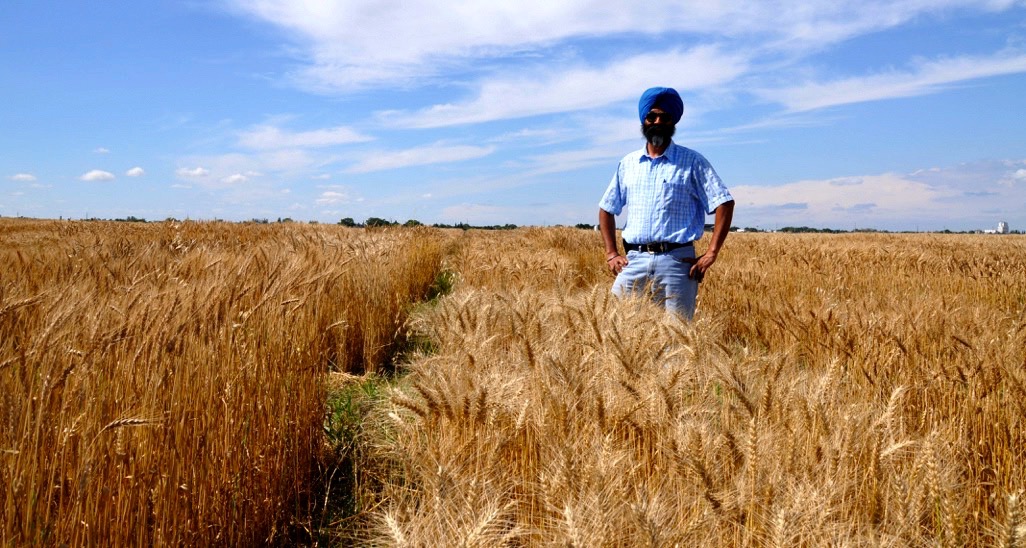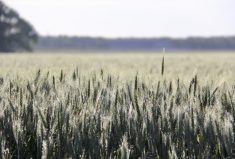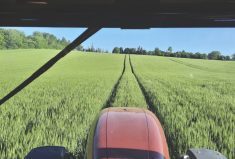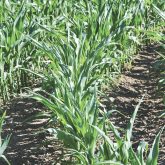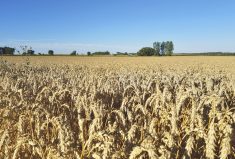Until relatively recently, there were few producers outside the irrigation belt of southern Alberta who had ever heard of, much less planted, soft white spring wheat (SWSW). However, backed by 50 years of research, the wheat class is suddenly showing a new potential to be grown on more acres and in more areas, and for more end-uses.
For the first time ever, Saskatchewan in 2016 outranked Alberta in SWSW acreage, with StatsCan reporting 420,000 acres there compared to 210,000 in Alberta, and with most of that production earmarked for ethanol rather than the traditional end-use of milling for pastry.
Read Also

Producers aren’t panicking over tariffs and trade threats
The influence of tariff and trade uncertainity on farm business decisions.
SWSW has also become a focal point for Canada’s wheat export trading strategy, although Cereals Canada president Cam Dahl cautions that while the international demand for SWSW is there, it will take some work — including research — to get production in Canada to meet that demand.
“We have to get to a point where it is economical for producers to contract and grow SWSW for export markets and have that reliable, consistent supply by which we can secure long-term customers,” Dahl says.
“It really it comes down to price. Transportation and logistics are critically important just as they are for all commodities, but when we’re talking about SWSW it just comes down to having price points that are competitive with the international market, and that offer prices to producers that provide the incentive to grow the crop.”
Expanding the area
SWSW has traditionally been grown under irrigation in southern Alberta. A substantial milling industry has flourished around the wheat class in that area thanks to its high starch and low protein, making it ideal for cookies, cakes, pastry, flatbreads and noodles. But more recently, SWSW has also become a popular feedstock for ethanol.
Harpinder Randhawa, spring wheat and triticale breeder with Agriculture and Agri-Food Canada (AAFC) in Lethbridge, points out that 10 to 20 per cent of SWSW is used for traditional milling wheat, while the rest is for other industrial purposes including ethanol, silage and malt.”
“The feedstock people are looking for the higher energy that comes from starch,” Randhawa explains.
A long-running soft wheat breeding program at AAFC Lethbridge is looking to expand SWSW into other areas. Studies indicate SWSW can be grown to milling quality in central and north-central Alberta with the correct seeding dates and nitrogen management.
“It generally grows best in the brown soils but it has adapted to the dark brown soil zone too,” says Randhawa. “Fortunately, some of the cultivars we tested and developed worked out. We’ve been testing all across Western Canada in Alberta all the way up to Edmonton as well as Saskatchewan with a few locations in Manitoba as well.
“The other issue, other than soil type, is day length. Some SWSW is slightly latish, maybe two to four days over what Alberta north of Edmonton can accommodate. That’s why adaptation is not suited all the way to the north, but in central and southern Alberta under irrigation it fits very well.”

Disease resistance
A major challenge in developing hardy SWSW varieties is breeding for resistance to fusarium head blight and stem rust, says Randhawa. “The traditional soft wheat variety didn’t have a lot of resistance to diseases such as stem rust or fusarium head blight, which has been a problem to SWSW in Saskatchewan and Manitoba and now even in Alberta in the case of fusarium.
“We try to incorporate a good level of disease resistance with the package along with maintaining yield potential — even though it already has very good yield potential — and then still try to bring it to milling quality.”
Balancing disease resistance and quality is a constant challenge, says Randhawa, and part of the reason it can take up to 10 years to bring a variety to market.
“If you have similar germplasm from a quality point of view, that makes it easier because you’re not dealing with failing to meet the quality requirements for export. But sometimes you have to bring in germplasm with quality profile from other market classes into the breeding process because the SWSW variety does not have the right level of disease resistance. It takes one or two cycles to try to bring up both the resistance and the quality because you can easily lose that aspect.”
Sprouting resistance
Another challenge AAFC-Lethbridge has been tackling is SWSW’s tendency to sprout at harvest time, Randhawa says. “Most white wheats are susceptible to sprouting and this year it’s a particular concern because we had a late harvest, and on top of that had early snowstorms in southern Alberta. Our focus has been to incorporate pre-harvest protein intolerance and we’re slowly making progress.
“One of our new varieties will probably be available in 2018 — it’s called AC Paramount. It has slightly improved pre-harvest sprouting resistance at the same time as an improved falling number, which gives an indication of the amount of sprout damage that has occurred within a wheat sample.”
Randhawa says there are always new lines of SWSW coming down the pipeline. The best bet for growers, he says, is to consult the Alberta Seed Guide. “You have to pick a variety that fits your farm need, where you farm and your main concerns.”
Ethanol interest continues
SWSW is a good candidate for ethanol because of its high starch profile compared to other wheat, says Dale Williamson, manager of sales and logistics with Terra Grain Fuels (TGF), a Regina-based ethanol production company which purchases 15 million bushels of wheat for ethanol annually.
“It is a good alternative to corn. Corn, depending on the area of the province, may struggle with heat units needed for production,” he says.
Although the class features a lower conversion rate to ethanol than corn, at 10.2 litres per bushel for SWSW compared to corn at 10.8 litres per bushel, Williamson says the ability to locally source SWSW for feedstock beats the conversion differential. “We would prefer the local wheat crop as the advantages of having a feedstock source locally is beneficial to TGF,” he says.
Despite the notable growth in acres of SWSW, there is not enough domestic production of ethanol to meet government-set mandates for fuel blends, says Williamson. “There is a five per cent mandate in Canada and a 7.5 per cent mandate in Saskatchewan. Canada does not have enough production to meet the mandate so U.S. ethanol does come into Canada.”
Complicating matters for production in Saskatchewan are recent wet conditions. “It’s caused some disease issues with the SWSW — not any worse than other wheat cereals but just challenging for producers in general. Durum crops this year are also highly affected by fusarium and TGF is working with producers to enable them to sell their wheat for ethanol production. We are also taking all of the SWSW that was contracted to TGF this year.”
As far as TGF is concerned, Williamson says the company will continue to contract growers to produce SWSW in the coming years. “We look to contract in advance each year and expect SWSW will remain a strong demand for ethanol production.”


